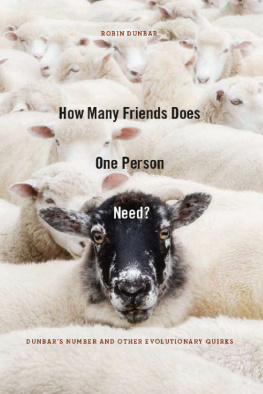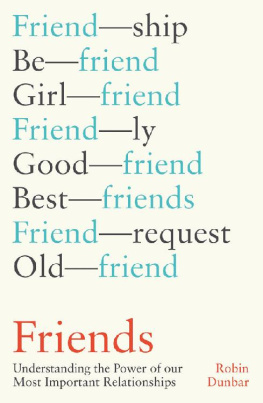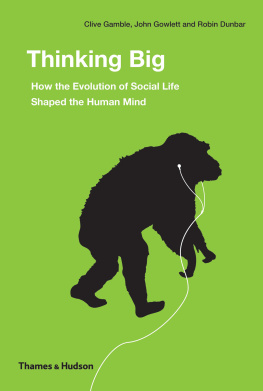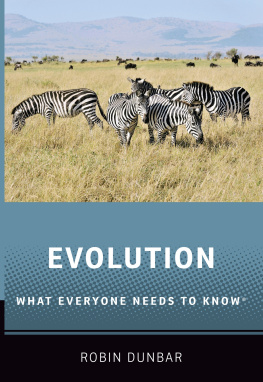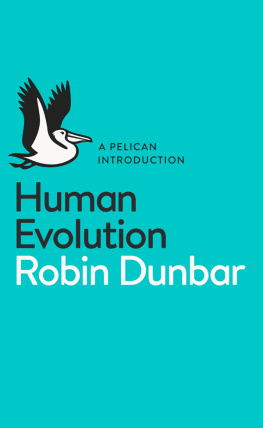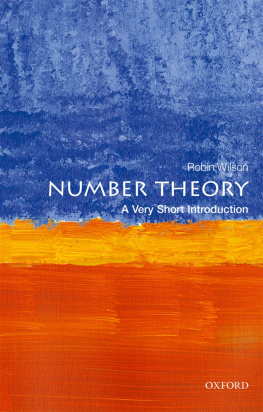Acknowledgements
This volume had its origins in a series of popular science articles that I wrote for New Scientist magazine (mostly between 1994 and 2006) and the Scotsman newspaper (between 2005 and 2008). In bringing them together in this volume, my intention has been to give some flavour of the excitement and some of the fun that has pervaded the evolutionary study of behaviour, and in particular human behaviour, over the last decade. I am grateful to both for providing me with an opportunity to indulge a passion for popular science writing over the years, as well as for allowing me to reuse these pieces in this volume. I also thank the Observer, Scotland on Sunday, the Times Higher Education Supplement, the Royal College of Physicians (London), Charles Pasternak and OneWorld Books, and Faber and Faber for permission to reuse individual pieces published by them. Most of these pieces have been substantially edited or adapted for this volume.
Pieces published in the Scotsman make up the bulk of chapters 2, 4, 5, 8, 9, 10, 12, 13 and 16, and feature in chapters 3, 6, 11, 14, 17, 19 and 21. Pieces published in New Scientist magazine appear in chapters 7, 13, 14 and 21, and make up the bulk of chapters 3, 17, 18, 20 and [Page 1] 22. A piece published in the Observer contributes to chapter 7, and one from Scotland on Sunday to chapter 21.
An article from the Times Higher Education Supplement makes up the bulk of chapter 15. Part of chapter 3
appeared in The Science of Morality (2007; edited by G.
Walker, published by the Royal College of Physicians, London); part of chapter 12 originally appeared in my The Human Story (2004, Faber and Faber); and part of chapter 15 appeared in What Makes Us Human (2007; edited by Charles Pasternak, published by OneWorld Books, Oxford).
Finally, I am grateful to my agent Sheila Ableman, and to my editor at Faber, Julian Loose. [Page 2]
Chapter 1
In the Beginning
We share a history, you and I. A history in which our respective stories snake back through time, edging ever closer to each other until finally they meet up in a common ancestor. Perhaps our lineages meet up only a few generations back, or maybe it was a thousand years ago.
Perhaps it was so long ago that it predates history though even that could not have been more than two hundred thousand years ago, a mere twinkle in earth time. For we modern humans all descend from a common ancestor who roamed the plains of Africa a mere ten thousand generations ago, ten thousand mothers giving birth to ten thousand daughters... no more than would fit in a town of very modest size today.
For us, that has two important implications. One is that we share most of our traits in common. From Alaska to Tasmania, and Tierra del Fuego to Spitzbergen, we are a single family, one biological species united by common ancestry. The other is that those traits we share are, nonetheless, the product of evolution, honed by the demands of the lives that our ancestors led. Sometimes, they are the product of deep evolutionary time, traits we share with the other members of our biological family, [Page 3] the great apes, and especially the African great apes.
Sometimes, those traits are of more recent origin, wrought in the fire of the particular circumstances that our more immediate ancestors faced in the battle for life, traits that mark us out as human not special, because we are just one of many tens of thousands of individually unique species of animals, but unique in that we alone possess them. Some of these give us the capacity for culture, that remarkable product of the human mind that has made us what we are those traits that allowed us to break away from our biological roots, that allowed human history to be what it is.
Yet, in our enthusiasm for the wonders of human culture, we sometimes overlook just how much of our behaviour is rooted in our biological evolution. The human mind is surely one of the wonders of the natural world, yet sometimes it seems so pedestrian and constrained that it is hard to see how we differ from any of the other primates. We live in massive conurbations numbering tens of millions of individuals, a product of our cultural flexibility if ever there was one. We have lived in villages only for the last ten thousand years, and cities the size of Bombay or Rio de Janeiro only for the last century at most. These are novel innovations, a product of our capacity to invent ways of making do.
Yet, at the same time, our social world is still what it was several hundred thousand years ago. The number of people we know personally, whom we can trust, whom we feel some emotional affinity for, is no more than 150, Dunbars Number. It has been 150 for as long as we have been a species. And it is 150 because our minds lack the capacity to make it any larger. We are [Page 4] as much the product of our evolutionary history as any other species is.
I probably owe my interest in evolution to my American grandmother. Though a fiercely God-fearing Presbyterian missionary, she was also a surgeon and sufficiently well-versed in science to be an enthusiast for the new discoveries in human evolution that were emerging from Africa during the 1950s. When I was ten or eleven, she sent me a series of Audubon Society booklets on every imaginable subject to do with the natural world, complete with sticky stamps to paste in. One was on evolution, and covered everything from dinosaurs to humans. I became hooked on the story of human evolution. Some years later, I read Darwins Origin of Species, having found it by chance in the school library. It was interesting, but I cant say I got a great deal out of it at the time. I was becoming more interested in philosophy, and science wasnt really my thing.
Then, five or six years later as a postgraduate student, I was thrust willy-nilly back into Darwins world. I was deeply engaged in studying the behaviour of monkeys in the wild, spending several years doing fieldwork in Africa during the early 1970s. At the time, evolutionary thinking in the behavioural sciences was apt to be somewhat loose and wayward. We returned from fieldwork in Ethiopia in late 1975 to find the world had been turned upside down. Edward O. Wilson had just published his Sociobiology: The New Synthesis and Richard Dawkins would publish The Selfish Gene the following year. It was a life-changing experience for all of us. Overnight, we were made to think about evolutionary processes in a much more rigorous way. We were being asked to return [Page 5] to a more strictly Darwinian view, after decades of increasingly lax, often speculative, thinking that had come to characterise much of organismic biology in mid-century.
Of course, neither book invented something that was novel. What both, in their different ways, did was to lay out in stark detail the ideas that evolutionary biologists had slowly been developing over the previous decades.
The big intellectual change was a shift away from thinking that evolution was for the benefit of the species to one in which evolution was for the benefit of the genes that underpinned a trait, whether that trait was physical or behavioural. This should not be taken to imply that behaviour is hardwired, determined by the genes you inherit.
Few traits are ever that simple in biology. But taking a genes-eye view in which the benefits of a trait are costed out in terms of the impact they have on how often a particular gene is represented in the next generation brings us closer to Darwins original conception of the theory of evolution by natural selection. More importantly, perhaps, it moved us away from the nave genes-determine-all-behaviour view that has so often bedevilled thinking in this area to one in which an individuals freely made decisions on how to behave, free of any direct genetic input, could still be understood in a Darwinian framework. The following decades saw a veritable explosion of research.

